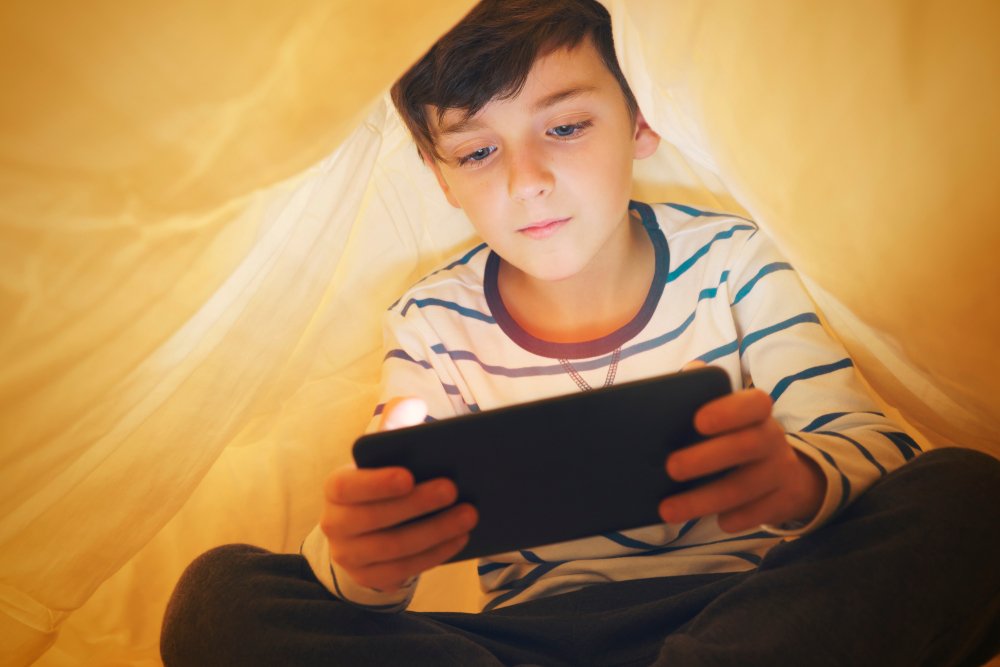 Distance learning, working from home and even telehealth visits means that all of us are spending considerably more time on screens. While many view this as a negative development, there are plenty of ways to have meaningful, valuable experiences online. Consider the following tips to keep you and your children’s eyes healthy, establish realistic screen time limits, and be more mindful about social media use.
Distance learning, working from home and even telehealth visits means that all of us are spending considerably more time on screens. While many view this as a negative development, there are plenty of ways to have meaningful, valuable experiences online. Consider the following tips to keep you and your children’s eyes healthy, establish realistic screen time limits, and be more mindful about social media use.
Protect Eye Health and Keep Good Posture
Make sure your child’s glasses or contact lens prescription is up-to-date so they aren’t squinting or sitting too close to their screens.
Find a chair that is supportive and ergonomic to avoid slouching and neck pain.
If work is being done on a desktop computer or a laptop, make sure your child’s eyes are level with the top of the monitor so that they can look slightly down at the screen.
Follow the 20/20/20 rule to avoid eye strain - rest eyes every 20 minutes by looking 20 feet away for 20 seconds.
Use a bigger screen whenever possible. A computer monitor or tablet is preferable over a mobile phone or device.
Get 60 minutes of natural sunlight a day.
Develop a Realistic Routine
Gather your family together and talk about what kind of routine is realistic for everyone in the household. Go over things like where will schoolwork be done, what times of day to take breaks and for how long, and different ways you can safely burn off physical energy.
Set aside time each week to let your child have a video chat or play games online with their friends. This will help them avoid feelings of isolation.
Adjust your expectations from week to week depending on you and your child’s workload. Not every week will be productive, so it’s important to allow yourself to have rest days.
Although it can be tempting, don’t use screen time as a reward or as a punishment. Strongly positive or negative associates with screen time will make it all the more important to children.
When setting limits on screen time, remember that not all screen time is created equally. Distance learning, for example, is an educational use of time, whereas video games are largely for fun and relaxation, so they shouldn’t be lumped together.
Use Social Media Mindfully
Share what offline activities you’ve been doing with your friends and followers, and encourage them to do the same. This is a great way to stay digitally connected while staying focused on life offline. It’s also an opportunity to exchange new ideas on how to keep yourself and loved ones occupied.
If you notice yourself or children becoming stressed out by the news, take a break from all electronic devices for at least 15 minutes.
Sit down with your child and use social media together as a family. Whether it’s posting pictures or just seeing what everyone else is up to, it’s a welcome change of pace to make social media a family activity, rather than a solitary one.
Use this screen time chart to keep track of how much time your family spends on electronic devices. Put it in a place where everyone will see it.
Challenge your children to practice self-control so you do not have to be solely responsible for managing their time online.
Capital Area Pediatrics knows that these are difficult times for parents, and we are proud to continue providing excellent care to our patients both in-office as well as through virtual visits. For the most current information on how we are keeping patients safe, read our Coronavirus Resources page. Find a Capital Area Pediatrics location near you to make an appointment.


